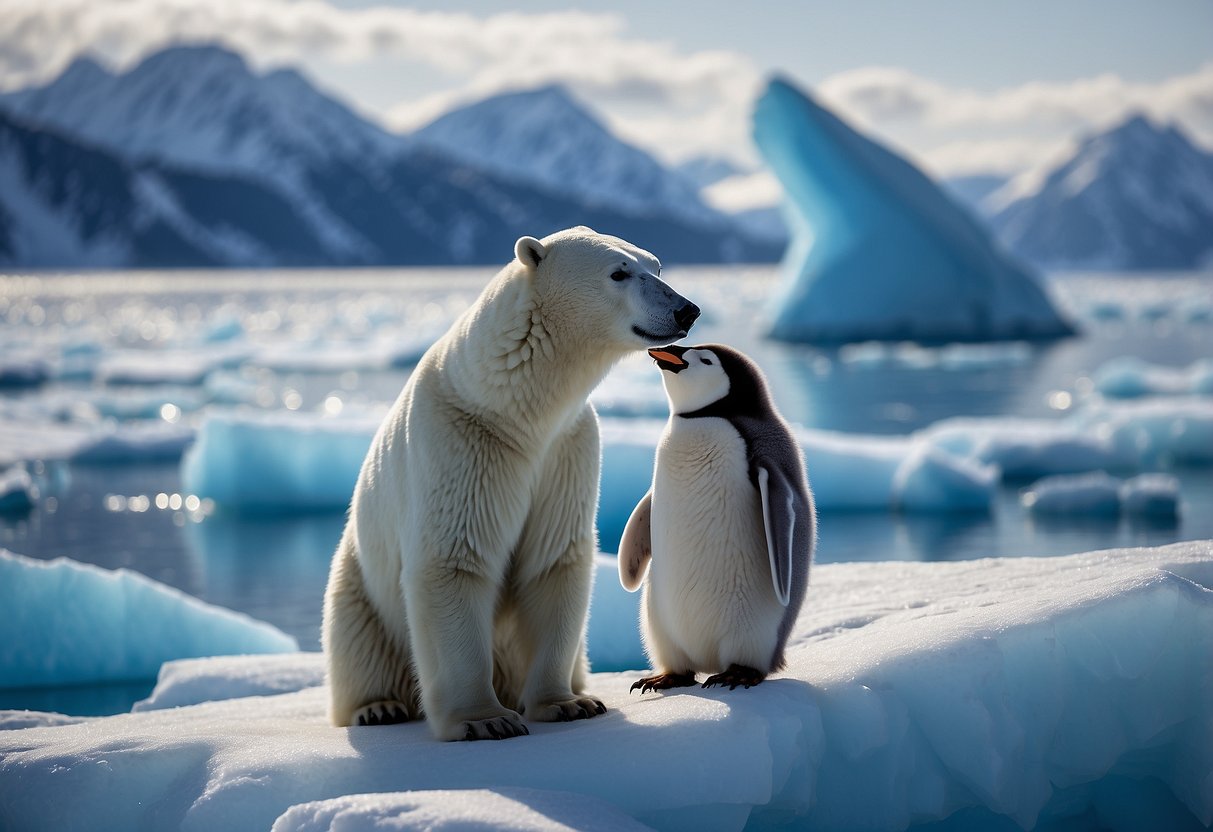The Ultimate Guide to Arctic and Antarctic Expedition Cruises: Navigating Polar Wonders
Planning to explore the raw beauty of our planet’s polar regions? An Arctic or Antarctic expedition cruise offers an unparalleled adventure through some of the most remote and pristine landscapes on Earth. These journeys promise sightings of magnificent wildlife, including penguins, polar bears, and whales, set against the backdrop of awe-inspiring glaciers and icebergs.
Cruising through these icy realms provides the unique opportunity to visit places inaccessible by other means. The expeditions are designed for those with a thirst for adventure and a passion for nature. Each cruise is typically led by expert guides and naturalists, ensuring a rich educational experience alongside the breathtaking sights.
Choosing the right time of year is crucial for maximizing your experience in these regions. The Arctic is best visited during its summer months from June to September, while the Antarctic season runs from November to March. Timing your trip correctly can enhance the chances of witnessing spectacular wildlife migrations and behaviors.
Understanding the Poles

The Arctic and Antarctic are two of the most remote and extreme environments on Earth, each offering unique geographical features, distinct wildlife, and varied climate conditions. These elements shape the experience of expedition cruises to these polar regions.
Arctic vs. Antarctic: Geographic Contrasts
The Arctic is a frozen ocean surrounded by continents, while the Antarctic is a frozen continent surrounded by the ocean. This geographical contrast results in differences in accessibility and expedition experiences. The Arctic encompasses parts of several countries including Canada, Russia, and Norway. Expedition cruises often navigate the Arctic’s complex coastline, including iconic destinations like Greenland and the Canadian Arctic Archipelago.
The Antarctic, governed by an international treaty, remains largely untouched by human settlement. Expeditions here focus on the Antarctic Peninsula, known for its towering icebergs and dramatic landscapes. The physical geography of these regions influences not just the journey but also the expedition’s challenges and opportunities.
Wildlife of the Polar Regions
The Arctic and Antarctic harbor fascinating and diverse wildlife adapted to extreme conditions. In the Arctic, one may encounter polar bears, Arctic foxes, and walruses. Migratory birds are abundant during the summer months, and visitors often see whales, including humpbacks and orcas, in the surrounding seas.
Contrastingly, the Antarctic is rich in marine life and hosts unique species like emperor penguins and Weddell seals. The nutrient-rich waters attract pods of whales and a variety of seabirds, including albatrosses and petrels. The biodiversity in these polar regions contributes significantly to the allure of expedition cruises.
Climate and Environmental Conditions
The climate of the Arctic is characterized by cold winters and short, relatively cool summers, with ice covering much of the ocean even in warmer months. This impacts navigation and the timing of cruises. Icebreaker ships are crucial for exploring certain parts. Weather conditions can change rapidly, making expedition planning essential.
The Antarctic, on the other hand, experiences severe cold with temperatures dropping well below freezing year-round. Summer temperatures along the coast can be milder, allowing for exploration and landings. The Antarctic has katabatic winds, which are strong and can impact travel plans. Environmental conditions in both regions present unique challenges, requiring specialized equipment and expert knowledge for safe navigation.
History of Polar Exploration
Polar exploration history is filled with tales of bravery, scientific milestones, and a quest for discovery in two of the Earth’s most extreme environments.
Historic Expeditions of the Arctic
Arctic exploration began with early ventures by indigenous Northern peoples. In the 16th century, European explorers sought a Northwest Passage to Asia. Notable figures include John Franklin, who led multiple Arctic voyages. Franklin’s 1845 expedition ended tragically, yet provided crucial geographic discoveries over time.
In the late 19th and early 20th centuries, explorers like Fridtjof Nansen and Robert Peary further expanded our understanding of the Arctic. Nansen’s 1893 expedition with the ship Fram was significant for its scientific achievements. Peary claimed to reach the North Pole in 1909, a controversial milestone that spurred debates but nonetheless highlighted human endurance.
Antarctic Exploration Timeline
Antarctic exploration’s history began in the 18th century with James Cook’s voyages that circumnavigated the continent. In the 19th century, explorers like James Clark Ross charted substantial portions of the coastline.
The early 20th century is known as the Heroic Age of Antarctic Exploration. Key figures include Roald Amundsen, who reached the South Pole in 1911, and Robert Falcon Scott, whose polar quests ended in tragedy but advanced scientific knowledge. Ernest Shackleton’s expeditions, especially the Endurance expedition, showcased remarkable survival and leadership.
In later years, technological advancements enabled more comprehensive scientific research. The 1957-1958 International Geophysical Year marked a significant period with the establishment of numerous research stations and increased international cooperation in Antarctic studies.



